
The controversy over whether one should buy high P/E – high quality stocks or low P/E – low quality stocks is as old as the hills.
While investors like Porinju Veliyath are firmly in favour of buying low P/E – low quality stocks on the basis that such stocks are “value picks”, others like Basant Maheshwari and Prof Sanjay Bakshi are staunch believers in the philosophy that that buying high P/E – high quality stocks is the only way to profit from stocks in the long run.
To this debate, Bharat Shah has now added a new perspective by explaining that the P/E ratio is an entirely wrong method to evaluate stocks. He has made his contempt for the P/E ratio more than clear:
“Price to earnings ratio is a rubbish way of computing value. But unfortunately that is the most prevalent method. Price to earnings is in fact a derivative of value, but people infer value from P/E. I mean, nothing can be more stupid than this. People will have all kind of rational P/E based on current or next year’s earnings. A P/E of 10 or 15 is good because on the past ten years the average P/E is more or so! I do not know how relevant that can be. The value of a business is intrinsic to the business. Price and opinion on it is external to that. The biggest fallacy of P/E is that it is one year’s earnings compared with today’s price whereas the value of a business comes from the future.”
So, what should investors look for when evaluating whether a stock is a worthwhile investment or not? Bharat Shah provides the answers with his customary clarity of thinking:
(1) Look for the size of the opportunity. Don’t look at the size of the fish but at the size of the pond:
Size of opportunity is the mother lode. It is about how big something can be in the future compared to what it is now. Every business can be converted into a tangible template based on the size of opportunity. You need to ask: What is there today? What are the gaps? How practical is the assumption that the gap will be covered? This understanding is the size of opportunity. It is about the size of the pond not about the size of the fish. In a large pond, both, large and small fish are welcome. But if the size of the pond is small, even a large fish will not create value.
Example of size of the pond – the shaving market in India:
Of the 120 crore people in India, half of them are males, so need to shave. Of the 60 crore people, if we exclude the very young and the very old, there are 45 crore potential customers. Out of the 45 crore, based on the affordability you can determine how many will be your customers. Based on their habits; whether they shave daily or four times a week, you can assume an average of 2.5 times a week. If the shaving solution costs Rs. 2 per shave, the weekly potential opportunity is some Rs. 220-240 crore. And multiplied by 52 weeks, you get Rs. 11,000-12,000 crore. You may not have the best razor in town but launching a shaving foam or aftershave or deodorant will expand the size of the pond.
(2) Pay attention to the quality (integrity) of management and their attitude towards capital allocation:
Apart from the size of opportunity, the quality of management is important. It can be assessed in terms of integrity and the ability to convert the future into a rewarding outcome. Management must be wise enough to allocate capital to deserving opportunities and return excessive capital to shareholders.
Examples of poor capital allocation:
(i) When you are unsure about the payoff but still allocate capital you are flirting with uncertainty;
(ii) If a management is unsure of the size of opportunity it will allocate capital randomly;
(iii) Frantic activity (diversification) could destroy value. No management has the capability of managing more than one or at the most two businesses. Trying to do too many things indicates a lack of confidence and an inability to comprehend the opportunity;
(3) High RoE indicates that capital allocation is proper and that the quality of growth is high – low RoE indicates value destruction:
Growth in itself is not enough; it is the quality of growth that creates value. Quality can be derived from the return on capital employed. If the return on capital is higher than the cost of capital being deployed in the business, it will add economic value. The equation is simple, economic value creation is the function of capital efficiency and the cost of capital. The difference between the two is the net value added. The total value add over the period of time discounted to the present is the net present value.
For these numbers to be attractive it has to grow, otherwise it will become like a bond. So if you are generating a return on capital lower than your cost of capital, even if your business is growing nominally, it is actually destroying value and the market price will reflect that eventually.
(4) Valuation is not only about numbers but requires valuing intangible factors:
You have to understand the business and character of the business, which are all intangible. Converting those intangibles into a tangible number is more of a mechanical process. More importantly, this must be looked at in the framework of the size of opportunity, calibre of the management, for what period of economic life you can reasonably forecast, whether the growth is accelerating or decelerating, whether it will be consistent or volatile? What will be the character of the growth in terms of producing return on capital, whether it will be rising or it will be falling? How long can it sustain? All these are judgments you need to ponder a lot. Once you are able to answer in some form of numbers, they need to fit into the valuation model. The model itself has to have robust mathematical and intellectual investment understanding to compute it right.
(5) Discounted Cash Flow (DCF) is the proper method of valuation:
Discounted Cash Flow (DCF) is what you do. Time value of money is critical. How can a rupee today and a rupee three years down the line be equal? Valuation is based on free cash flows. It is the incremental real cash generated over the estimated economic life of a business discounted back to the present. The total of different NPVs is the value.
(6) The Q as to the period for which the stock will be held should be determined by the character of the business and its valuations:
Whether you are going to hold the stock for ten years or twenty years is based on the character of the business. But whether you will prolong that journey or not will be decided by the excess of price over the value of the business. Character of the business is important but how much you are paying for it is equally important.
(7) So, investors should look at the size of opportunity, quality of management and its “economic” value when evaluating a stock:
In a nutshell, size of opportunity plus management gives me growth, growth plus quality of growth creates economic value and buying economic value at a discount creates an investment return higher than the economic value itself.
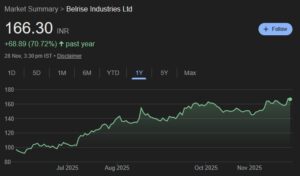

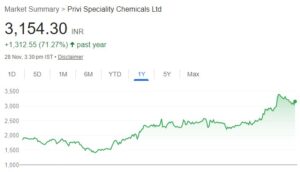
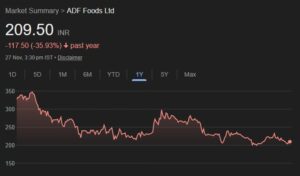
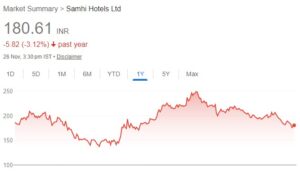
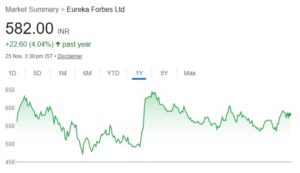
SIR CAN YOU MAKE ANY ASSESSMENT OF INDIGO FOR 5 YEARS INVESTMENT. THANK YOU
Market cap of Indigo is four time the combined market cap of spicejet and jet .Is its capacity and business is four time ????Delivery of Airbus neo is delayed.If it had not got deleted,how much fuel it had saved when crude is at lowest.????Now it may get its delivery at wrong time of cycle,with other players who could not increase capacity ,but are in market to buy new planes.What about anticipted competion from another low cost airline AirAsia .And Biggest of these, Tata joint venture with Singapur airlines with lot of experince and deep pockets impending competion .There are more questions then answers.???? Which I don’t know as I dont understand it’s business model.During IPO ,it declared Huge dividend to existing share holders and explained that it’s dividend policy will continue.Where are dividends of second and third quarter for new investers???Cafe coffee day IPO flopped with big investers stuck. Same set of big investers stuck here???I don’t know .I don’t know if the hype is an Exit route???This is the Stock with mystry to me ???? I don’t know ABCD of airline business.Just in search of many answers to my queries like you ???
I would like to congratulate manament for Great IPO ,for permoters,Priced to Perfection and Well Timed,when every thing was at the best,crude down, competition less due to grounding of Kingfisher and competetion in fincial distress.and market investers waiting for making money in Hurry.No doubt we can make money in any stock,but question is from what level? .We dont know present stock price is hijacked or not,But is it cheap ????when best of the blue chips are at mouth watering valuations and valuations has become function of Blood Bath.I also like a ignorant small invester is searching answers for my queries like you.May be my all doubts are wrong,I will be happy to be wrong , as I don’t know airline business.
SIR THANK YOU. WISDOM SIMPLIFIED. SHOULD I STAY AWAY FROM INDIGO THEN? IT LOOKED GOOD AFTER THE FALL. PLEASE SIMPLIFY.
Dude,
You buy stocks only if you are highly convinced yourself.You cannot invest on borrowed conviction, finally its your money. So think really before you invest. Me i bought 1 share of Indigo to make a test at 1200 Rs yesterday i saw after two weeks the share price drop 20% in a day. What kind of fundamentals do this stock have. Nothing absolutely nothing. The value of the company is negative value. Yes they declared dividends for that IPO gimmicks, afterall promoters are the biggest share holders. So who benefited from the Dividend, who benefited from the IPO just the Promoters smart people. Always read the intelligent investor before you invest in stock market. You will understand for yourself.
Thre is a fundmanager from Cochinwho is famous for stock picks froms low quality low PE and choor promotors and interested in getting insider info and utilise that for interpretation in favour of him utilising social media I do not want to spell his name but All here knows him
you said it
So what is new here. Basically do due diligence on the stock. But this article is actually ridiculous. What if after following all due diligence and scoping the potential for growth and management we come to a price range and the current PE is so exaggerated that it is still the current price. Do you ignore the PE or say, oh, I guess the market has already provided for said opportunity and factored in. Therefor an investment would make no sense since the scope has now become void.
There is or there was??
What is current status of portfolio of followers?
Dear Arjun, again a nice article from you. Even seasoned investors need inputs such as these factors that you have pointed out. Refering to the first point of Mr. Bharat Shah that one shoud look at the size of the pond, I may also point out that there should some sort of ratio like PE in this context. Say if the size of the opportunity is 9,000 crores and there are three companies who make the same product, say Product A whose toplines are 100 crores, 300 crores and 500 crores. So can we say the ratio of opportunity versus current size is 9,000 divided by 900, is lower than say companies who make another product B (in a totally different sector) where the ratio is 100, and completely eliminate A from from our screener? Sorry for this long query but I feel it is a relevant issue and Mr. Shah could throw light on this.
After a long time, a good article. Articles should enhance the knowledge of readers but not make them the slaves of rich people.
Thank you
A simple logic:
If you are trying to buy, operators and management will sell (only @ higher levels.)
If you are trying to sell, operators and management will buy (only @ lower levels.)
Ultimately they will thank you.
super
Sensible article. Like Buffet always says, buy an industry that has structurally high RoE,no need to worry about PE as even with a high PE, if you hold on for a good period of time, you will make more money consistently than in anything else.
Hi,
I beleive we all started from reading THE INTELLIGENT INVESTOR the bible of investing, in that book it says you cannot an apple for a price above the market value and try to sell it at much bigger price. Its that simple, you should always stick to P/E, any stock you take it for a year period it sells in a range of price you can say that is the 52 week high or low. You should be smart enough to but it at 52 week low then you are kind of contained to disasters in stock market. This portfolio managers just say high PE high quality are all bullshit, a recent eg being Hawkins Cookers etc.. Indigo…
You buy fundamentaly good compnies with some pricing power along with some growth, preferably at sensible price in atleast four trenches over a period like SIP or in crash like now.Even for discussion ,I assume you bought such compnies at slightly higher prices, on a fall you can average it out that eventual y stick will go up in long run.But this logic will not work in poor qualityDuds as only fathers of duds know ,how to handle them.So stay away from Duds leave them to their fathets and permoters.
THANK YOU GOOD SIR. WISDOM SIMPLIFIED. I BUY THAT BOOK.
thanks Arjun, wonderful report.. you are doing a great job..
I agree with Bharat Shah to some level.